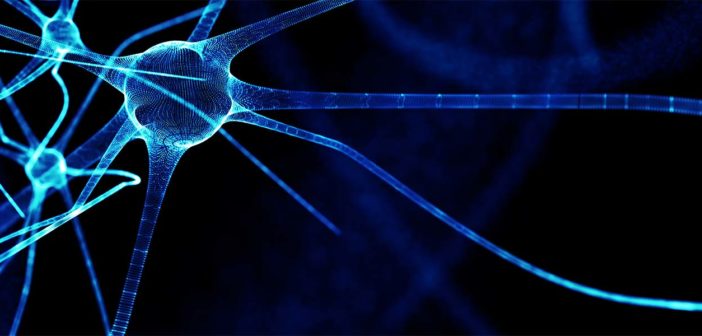

The brain may sometimes know what it’s smelling before scents reach the nostrils, according to a new Northwestern Medicine study published in Nature Communications.
Volunteers were prompted with a spoken word before being presented with a scent, and measuring their brain waves revealed synchronization between the auditory and olfactory cortices. This concurrent low-wave oscillation, called phase synchrony, is an important reflection of multisensory integration in the human brain, according to Guangyu Zhou, PhD, a postdoctoral fellow and lead author of the study, and Christina Zelano, PhD, assistant professor in The Ken and Ruth Davee Department of Neurology in the Division of Comprehensive Neurology, and senior author of the study.
Olfactory naming deficits are a common early symptom in neurodegenerative diseases such as Alzheimer’s disease and Parkinson’s disease, so learning more about multisensory integration between hearing and smelling could inform diagnosis or treatment, Zelano explained.
“Phase synchrony is present during olfactory multisensory integration in healthy brains, suggesting a potential avenue of research into new biomarkers of degeneration,” Zelano said.
Even when healthy, humans’ ability to identify scents by smell alone is surprisingly poor compared to other animals, according to Zelano. Humans use other senses — such as sight or hearing — to aid their olfactory perception, but these sensory processing centers are located all over the brain, with significant distances between them, neurologically speaking.
The specifics of this multisensory integration and communication have been largely unexplored in regards to scent: the olfactory cortex is deep in the brain and difficult to study. But Zelano and her colleagues were afforded a unique opportunity by the Northwestern Medicine Comprehensive Epilepsy Center’s epilepsy monitoring unit, directed by Stephen Schuele, MD, MPH, chief of Neurophysiology and Epilepsy in the Department of Neurology and professor of Physical Medicine and Rehabilitation, and co-author of the study.
Some patients with epilepsy suffer from intractable seizures, and choose to undergo brain surgery to help reduce seizure frequency. Before the procedure, their brains are mapped using electrodes implanted deep in the brain and they spend about a week in the epilepsy monitoring unit — one of the only times that real-time brain wave data from the olfactory cortex is available, Zelano noted.
In the current study, the investigators conducted tests with volunteers in the monitoring unit, prompting the volunteers with the word “rose” or “mint” before spraying the essence of either rose or mint under their nose and asking the subject to identify the scent — all while recording brain function.
As expected, the subjects performed well on the task, but they weren’t perfect. When Zhou analyzed the data, however, he found a startling result: in nearly every single case where the volunteer correctly matched the word cue with the scent, oscillations in the olfactory cortex synchronized with the auditory cortex prior to the scent arriving.
“I couldn’t believe it; you could predict if they were going to answer correctly based on this brain signaling, before they even smell the odor,” Zhou said.
Both the auditory and the olfactory cortices exhibited matching low-frequency brainwaves, an effect known as phase synchrony.
“The auditory area encodes the cues and synchronizes with the olfactory area,” Zelano said. “If the volunteers brains didn’t show this effect, they got the answer wrong.”
Further investigation of the inter-sensory pathway might reveal why olfactory naming deficits are one of the first detectable losses in neurological dementia, and aberrations in this pathway could indicate early-stage disease. In the future, Zelano hopes to conduct tests like these on patients with neurodegeneration, to learn how phase synchrony is affected by those diseases.
In addition, learning more about phase synchrony might shed light on how the senses come together to build a single integrated experience, Zelano explained.
“This constant, incredibly fast process of integrating senses is all we have,” Zhou said. “The input from our senses is how we know what’s happening in the world, and investigating this pathway has the potential to uncover how these things operate across the entire brain.”
Other Feinberg co-authors include Torben Noto, a second-year student in the Northwestern University Interdepartmental Neuroscience Program; Ghazaleh Arabkheradmand, research technologist in the Zelano laboratory; and Joshua Rosenow, MD, professor of Neurological Surgery, Neurology and of Physical Medicine and Rehabilitation.
This work was supported by National Institutes of Health grants from the National Institute on Deafness and Other Communication Disorders (NIDCD) R00-DC-012803 and R01-DC-016364, The National Institute of Neurological Disorders and Stroke (NINDS) T32-NS047987 and The Knut and Alice Wallenberg Foundation KAW 2016:0229.






